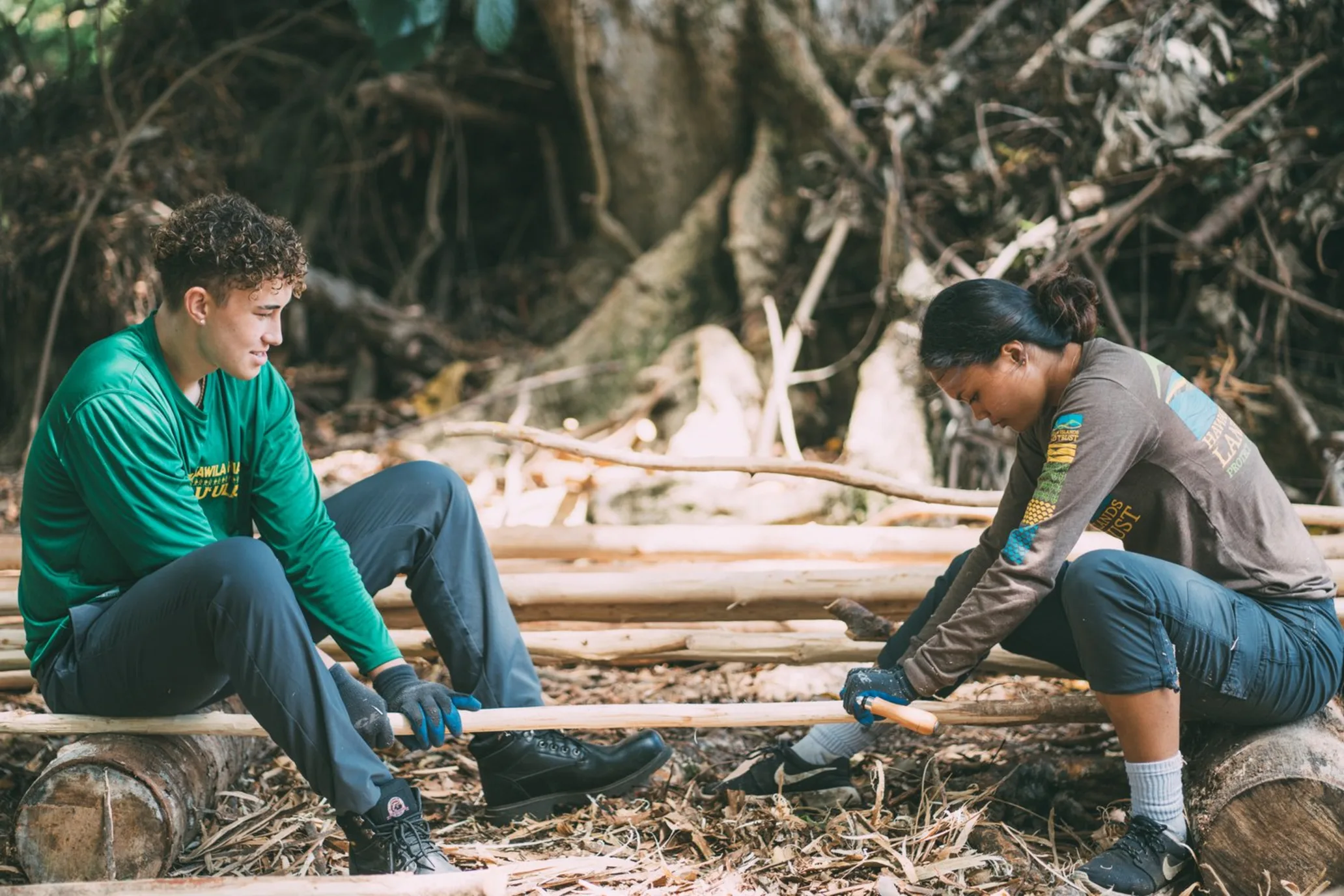Building community through cultural practice
Indigenous Hawaiian communities traditionally made hale shelters (pronounced “ha-lay”) out of local materials, but over time the practice was replaced by Western-style houses and nearly lost.

Indigenous Hawaiian communities traditionally made hale shelters (pronounced “ha-lay”) out of local materials, but over time the practice was replaced by Western-style houses and nearly lost. Traditional hale were constructed of native woods lashed together with cordage. The shelters not only protected people from the elements but also helped to define their social life.
A program this summer under Hawaiʻi Land Trust at Maunawila Heiau Complex — a sacred ancestral place of worship and a wahi kūpuna owned and stewarded by the land trust — taught paid summer interns to construct a hale using traditional techniques and materials. The 2022 Maunawila ʻŌpio summer program included hale building with Indigenious Minds LLC to teach the art of Indigenous Hawaiian Architecture. The hale building program was led by Tiana Henderson, who was a haumana (student) of master hale builder, Francis Palani Sincenci. The program used Henderson’s “Kūkulu Collection” and hale building curriculum with the interns and members of the Koʻolauloa community (Waimea to Kualoa district).
The interns learned the different stages of kūkulu hale: harvesting, preparing the materials, carving, lashing and thatching. They also learned different Hawaiian values like mālama ʻāina — care for the land and the land will provide us with what we need — and participated in a kanu nā pou blessing, equivalent to a groundbreaking ceremony.
“This was a special project, not only for this program, but more importantly for our community. As we kūkulu hale, we not only learn the traditional techniques, we are reviving this artform, reconnecting and strengthening one another, building pilina (connection and relationships) with our community, and spreading culture by sharing and doing,” says HILT Steward and Educator Mamo Leota.